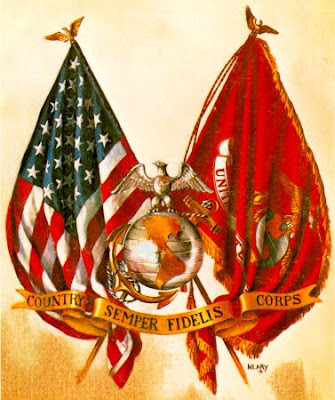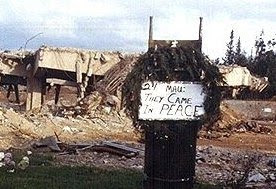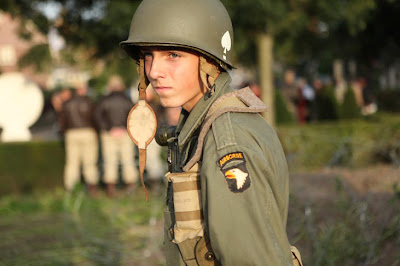Today marks the start of the 2009 Valour-IT Blogging Fundraiser Competition, which will continue until Veteran's Day. As always, the "competition" is between blogging teams representing the 4 service branches, Army, Navy, Air Force and Marines to raise funds for Valour-IT. All donations go into one fund and will of course be used for members of all service branches.
Readers of this blog are familiar with Soldiers' Angels
Project Valour-IT, which provides laptop computers and other electronic devices to wounded service members recovering at major military medical centers in the United States.
And as you can imagine, this project is very close to our hearts. We see our guys as they arrive in Germany directly from the battlefields of Iraq and Afghanistan on a daily basis. And as we watch them leave for the U.S. three times each week, we take comfort in the belief that their fellow Americans back home will take care of them and make sure their sacrifices have not been forgotten.Your contribution will help keep them connected to the world as they heal. It will remind them they are NOT alone - that they still have something to contribute, they are still a vital part of this nation, and even though they may have lost parts of themselves they can never recover, though they may temporarily be feeling hopeless, helpless, even alone, they aren't.

Soldiers' Angels Germany is proud once again to be a member Marine Valour-IT blogging team, this year headed up by Cassandra and Carrie of
Villainous Company (thanks, ladies!)
You can donate using your credit card or electronic check by clicking on the Valour-IT widget in the right-hand sidebar, or by sending a check to:Soldiers Angels Project Valour-IT
MARINE CORPS TEAM1792 E. Washington Blvd
Pasadena, CA 91104
Please note "Marine Corps Team" on your check so we get credit for your donation, because we want to WIN this thing!
You can also help by spreading the word about Valour-IT:
* Blog and email your friends about Valour-IT and the competition
* Tell your friends, family and neighbors about Valour-IT
* Challenge your co-workers or employer to match donations
* Consider involving clubs, churches, or charitable organizations you are involved with. Maybe your church would designate all or part of a Sunday collection. How about Scouts or your favorite civic organization?
* If you have any contacts in the media (local or national newspapers, radio, TV, PLEASE spread the word! Point them to the
Project Valour-IT site.
* No matter which way you decide to get involved, remind everyone to specify the MARINE TEAM!
Thank you and Semper Fi!
About Valour-ITProject Valour-IT provides technology to service members recovering from serious injuries. Technology supplied includes:
- Voice-controlled and other adaptive Laptops allow wounded service members to maintain connections with the rest of the world during recovery.
- Wii Video Game Systems which are used as part of physcial therapy program, and
- Personal GPS, to build self-confidence and independence by compensating for short-term memory loss and organizational challenges related to severe TBI and severe PTSD.

































